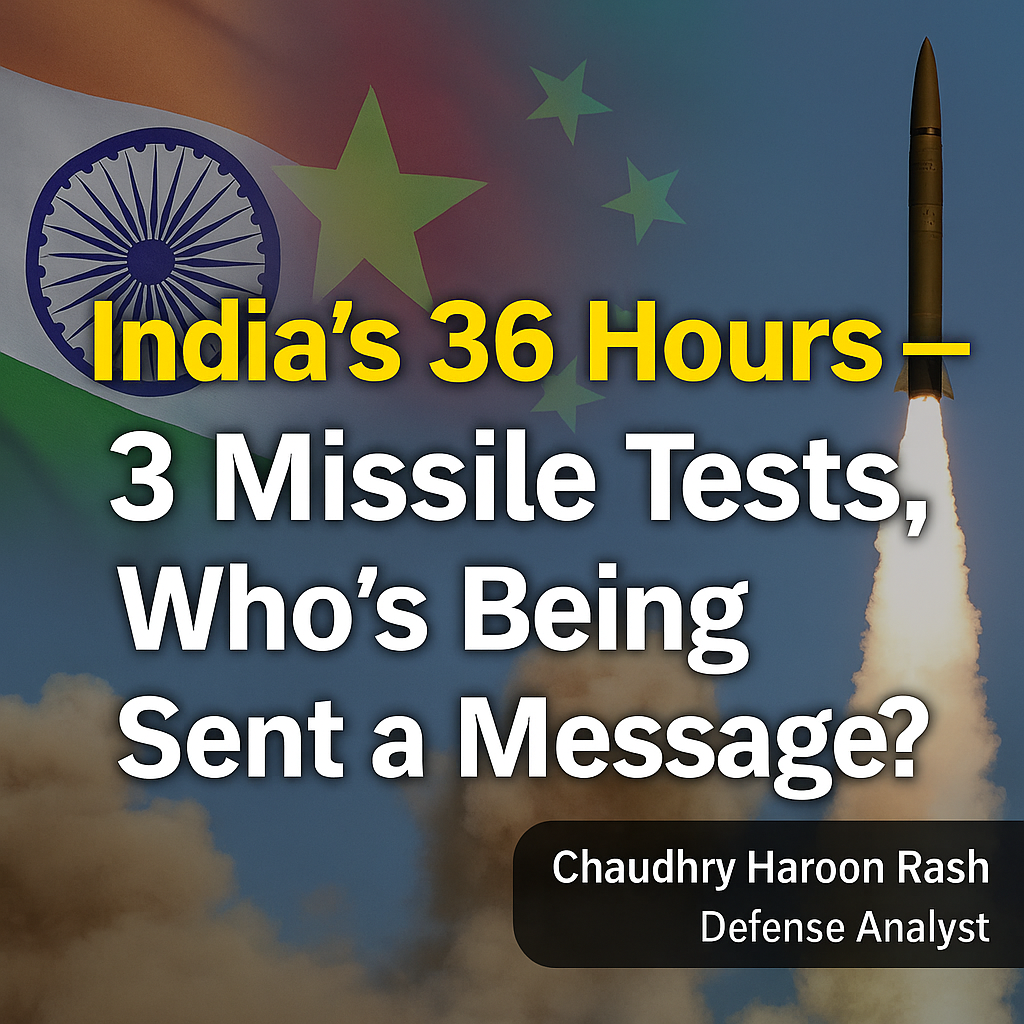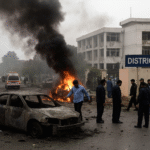In a bold show of strength and strategic clarity, India recently conducted three missile tests within a span of just 36 hours. While on the surface these launches appear routine, their timing, variety, and frequency suggest a deeper purpose one not just aimed at enhancing military capabilities, but at sending a loud and clear message across the region.
This rare testing tempo is no coincidence. It serves as a calculated signal to both of India’s key adversaries Pakistan and China and to major global powers observing the shifting balance in South Asia.
The Missiles: What Was Tested?
India’s Defence Research and Development Organization (DRDO) confirmed testing the following systems:
- Agni-Prime (Agni-P):
A medium-range ballistic missile (MRBM) with nuclear capability, designed for quick, canister-based launches making it both mobile and easy to deploy. - BrahMos Supersonic Cruise Missile (Extended Range):
Developed in partnership with Russia, this version now boasts a range of up to 800 km and is capable of precision strikes particularly suited for naval and coastal defense. - Helina or Nag (Variant):
A tactical anti-tank guided missile, designed to neutralize enemy armor with high accuracy, playing a critical role in close-range battlefield deterrence.
What makes this significant is the diversity: nuclear, cruise, and tactical battlefield missiles — all tested back-to-back. This isn’t common. It’s a deliberate show of escalation capability across domains.
Who Is the Message for and What Is It Saying?
To China: A Shift in Posture Along the LAC
Since the 2020 Galwan clash, India has steadily toughened its approach toward China. The testing of Agni-P and BrahMos highlights two key messages:
- India now has credible second-strike capability, with missiles that can target Chinese bases in Tibet.
- It possesses area-denial and precision-strike systems that improve its high-altitude warfare posture.
The message to Beijing is clear: India is not waiting to react anymore. It’s preparing to strike first if necessary.
To Pakistan: Deterrence and Dominance
India’s military doctrine has undergone a major shift in recent years from restraint to readiness. These missile tests drive home two messages:
- India is capable of rapid, multi-layered retaliation in the event of provocation.
- Its missile arsenal isn’t just strategic it’s tactical too, giving flexibility in both conventional and nuclear conflict scenarios.
To Islamabad, the message reads: “We can escalate faster and more effectively than you’re prepared for.”
To the Global Stage: A Responsible Regional Power
India isn’t just signaling to its neighbors. It’s also reminding key global players like the U.S. and Russia of its strategic value.
- For Washington, this reinforces India’s role as a counterweight to China in the Indo-Pacific.
- For Moscow, it reaffirms the success of Indo-Russian defense ties, especially through projects like BrahMos.
- For others in the Global South, it portrays India as a rising power with technological depth and regional responsibility.
Implications for Pakistan
1. Strategic Gap Widening
Pakistan’s missile program is credible but faces hurdles economic pressure, limited modernization, and global scrutiny. India’s accelerated testing places new demands on Pakistan to keep up, especially in:
- Cruise missile technology
- Canister-based second-strike readiness
- Tactical battlefield deterrents
2. Preemptive Strike Anxiety
The inclusion of short-range tactical systems suggests India is preparing for Cold Start-type operations limited, rapid military action under the nuclear threshold. This pushes Pakistan toward higher alert levels, increasing the risk of miscalculations in a crisis.
Implications for China
1. Tactical Parity in the Himalayas
China has poured resources into building border infrastructure and forward military bases along the Line of Actual Control. But India’s tests particularly of mobile systems like Agni-P — challenge that advantage.
India is signaling it can now launch fast and precise strikes deep into Chinese positions across the Himalayan frontier.
2. Naval Message in the Indian Ocean
The extended-range BrahMos missile has significant maritime implications. From island bases like the Andaman and Nicobar Command, India can now directly threaten Chinese naval assets in critical zones like the Malacca Strait a lifeline for Chinese trade and energy imports.
Broader Strategic Context
1. Domestic Political Optics
With elections approaching, the government is keen to project a strong and assertive national image. Defense showcases like these are often used to unite public sentiment and shift attention away from domestic concerns whether economic or social.
2. Indo-Pacific Alignment
As tensions rise between the U.S. and China, India is aligning more closely with the Quad nations. These missile tests strengthen its profile as a military partner in the Indo-Pacific and justify future tech-sharing agreements with allies.
Conclusion
India’s triple missile tests are more than a technical exercise. They’re a calculated geopolitical statement to adversaries, allies, and voters alike.
For Pakistan, it’s a reminder that the conventional and nuclear balance is tilting further away. For China, it’s a sign that India won’t stay passive in either the Himalayas or the oceans. And for the world, it’s proof that India is increasingly capable and willing to act on its strategic ambitions.
But with rising firepower comes rising responsibility. Miscommunication, misjudgment, or political brinkmanship could easily turn tests into triggers. South Asia’s stability depends not just on what weapons are tested but on how wisely they are used.










